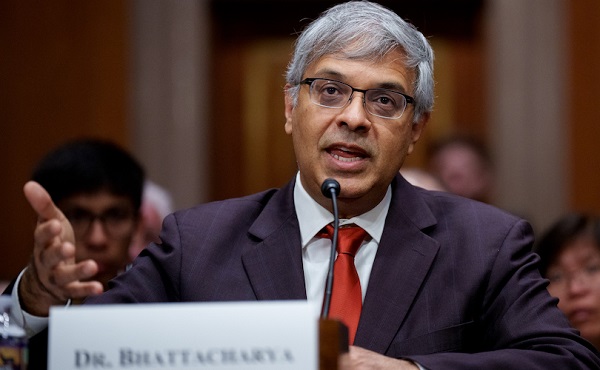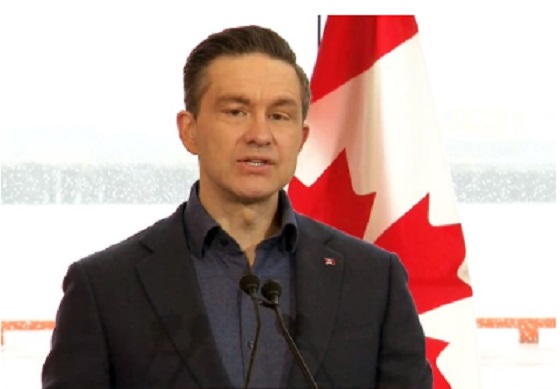Health
Ethical Vaccine: Trump nominee Jay Bhattacharya says NIH will not use aborted babies in research

Jayanta Bhattacharya, U.S. President Donald Trump’s nominee to be Director of the National Institutes of Health, speaks at his confirmation hearing before the Senate Committee on Health, Education, Labor, and Pensions on Capitol Hill
From LifeSiteNews
By Matt Lamb
The use of aborted babies in research is one of the main reasons many Christians oppose the use of several vaccines
The National Institutes of Health will not use abortion fetal tissue in research, according to President Donald Trump’s nominee to lead the agency.
Dr. Jay Bhattacharya made the comments on Wednesday during his hearing in front of the Senate Health, Education, Labor, and Pensions Committee in response to a question from Republican Senator Josh Hawley of Missouri.
“In public health, we need to make sure the products of science are ethically acceptable to everybody,” Bhattacharya said during the hearing. “And so having alternatives that are not ethically conflicted with fetal cell lines is not just an ethical issue, but it’s a public health issue.”
Dr. Bhattacharya said it is important to have ethical testing guidelines, sharing his experience answering questions on Catholic radio about the mRNA COVID shots. The jabs are tainted by their development using a fetal cell line derived from an aborted baby, which has caused moral concerns for faithful Catholics and also Protestants.
“Looking forward to voting for him to be our next NIH director,” Sen. Hawley wrote on X (formerly Twitter).
Dr. Bhattacharya is a well-respected medical doctor who gained further fame as a COVID contrarian, rejecting the establishment narrative that widespread lockdowns of the economy and schools were needed to slow the spread of the virus.
As LifeSiteNews previously reported:
Bhattacharya was one of the earliest and most notable critics of the draconian COVID response by most governments around the world. In October 2020 he co-authored The Great Barrington Declaration, which criticized the harmful lockdown policies. Bhattacharya is a professor of medicine, economics, and health research policy at Stanford University in California and the director of Stanford’s Center for Demography and Economics of Health and Aging.
Bhattacharya is the latest high-ranking public health official to affirm the Trump administration will not allow for the use of aborted fetal tissue in federally funded research.
Secretary of Health and Human Services Robert F. Kennedy Jr. previously assured Sen. Hawley he would prohibit the practice when questioned prior to his confirmation.
“Will you reinstate President Trump’s policy that ensures that no federal research and no federal tax dollars is conducted on fetal tissue taken from elective abortions,” Hawley asked RFK Jr.
“Yes,” the nominee said, as previously reported by LifeSiteNews.
President Trump’s administration previously rejected 13 or 14 requests to use aborted fetal tissue, as LifeSiteNews reported in 2020.
Alberta
Alberta takes big step towards shorter wait times and higher quality health care

From the Fraser Institute
On Monday, the Smith government announced that beginning next year it will change the way it funds surgeries in Alberta. This is a big step towards unlocking the ability of Alberta’s health-care system to provide more, better and faster services for the same or possibly fewer dollars.
To understand the significance of this change, you must understand the consequences of the current (and outdated) approach.
Currently, the Alberta government pays a lump sum of money to hospitals each year. Consequently, hospitals perceive patients as a drain on their budgets. From the hospital’s perspective, there’s little financial incentive to serve more patients, operate more efficiently and provide superior quality services.
Consider what would happen if your local grocery store received a giant bag of money each year to feed people. The number of items would quickly decline to whatever was most convenient for the store to provide. (Have a favourite cereal? Too bad.) Store hours would become less convenient for customers, alongside a general decline in overall service. This type of grocery store, like an Alberta hospital, is actually financially better off (that is, it saves money) if you go elsewhere.
The Smith government plans to flip this entire system on its head, to the benefit of patients and taxpayers. Instead of handing out bags of money each year to providers, the new system—known as “activity-based funding”—will pay health-care providers for each patient they treat, based on the patient’s particular condition and important factors that may add complexity or cost to their care.
This turns patients from a drain on budgets into a source of additional revenue. The result, as has been demonstrated in other universal health-care systems worldwide, is more services delivered using existing health-care infrastructure, lower wait times, improved quality of care, improved access to medical technologies, and less waste.
In other words, Albertans will receive far better value from their health-care system, which is currently among the most expensive in the world. And relief can’t come soon enough—for example, last year in Alberta the median wait time for orthopedic surgeries including hip and knee replacements was 66.8 weeks.
The naysayers argue this approach will undermine the province’s universal system and hurt patients. But by allowing a spectrum of providers to compete for the delivery of quality care, Alberta will follow the lead of other more successful universal health-care systems in countries such as Australia, Germany, the Netherlands and Switzerland and create greater accountability for hospitals and other health-care providers. Taxpayers will get a much better picture of what they’re paying for and how much they pay.
Again, Alberta is not exploring an untested policy. Almost every other developed country with universal health care uses some form of “activity-based funding” for hospital and surgical care. And remember, we already spend more on health care than our counterparts in nearly all of these countries yet endure longer wait times and poorer access to services generally, in part because of how we pay for surgical care.
While the devil is always in the details, and while it’s still possible for the Alberta government to get this wrong, Monday’s announcement is a big step in the right direction. A funding model that puts patients first will get Albertans more of the high-quality health care they already pay for in a timelier fashion. And provide to other provinces an example of bold health-care reform.
Alberta
Alberta’s embrace of activity-based funding is great news for patients

 From the Montreal Economic Institute
From the Montreal Economic Institute
Alberta’s move to fund acute care services through activity-based funding follows best practices internationally, points out an MEI researcher following an announcement made by Premier Danielle Smith earlier today.
“For too long, the way hospitals were funded in Alberta incentivized treating fewer patients, contributing to our long wait times,” explains Krystle Wittevrongel, director of research at the MEI. “International experience has shown that, with the proper funding models in place, health systems become more efficient to the benefit of patients.”
Currently, Alberta’s hospitals are financed under a system called “global budgeting.” This involves allocating a pre-set amount of funding to pay for a specific number of services based on previous years’ budgets.
Under the government’s newly proposed funding system, hospitals receive a fixed payment for each treatment delivered.
An Economic Note published by the MEI last year showed that Quebec’s gradual adoption of activity-based funding led to higher productivity and lower costs in the province’s health system.
Notably, the province observed that the per-procedure cost of MRIs fell by four per cent as the number of procedures performed increased by 22 per cent.
In the radiology and oncology sector, it observed productivity increases of 26 per cent while procedure costs decreased by seven per cent.
“Being able to perform more surgeries, at lower costs, and within shorter timelines is exactly what Alberta’s patients need, and Premier Smith understands that,” continued Mrs. Wittevrongel. “Today’s announcement is a good first step, and we look forward to seeing a successful roll-out once appropriate funding levels per procedure are set.”
The governments expects to roll-out this new funding model for select procedures starting in 2026.
* * *
The MEI is an independent public policy think tank with offices in Montreal, Ottawa, and Calgary. Through its publications, media appearances, and advisory services to policymakers, the MEI stimulates public policy debate and reforms based on sound economics and entrepreneurship.
-

 2025 Federal Election1 day ago
2025 Federal Election1 day agoWATCH: Massive Crowd for Historic Edmonton Poilievre Rally
-

 MacDonald Laurier Institute2 days ago
MacDonald Laurier Institute2 days agoRushing to death in Canada’s MAiD regime
-

 2025 Federal Election1 day ago
2025 Federal Election1 day agoAn In-Depth Campaign Trail “Interview” With Pierre Poilievre
-

 2025 Federal Election1 day ago
2025 Federal Election1 day agoHarper Endorses Poilievre at Historic Edmonton Rally: “This Crisis Was Made in Canada”
-

 2025 Federal Election2 days ago
2025 Federal Election2 days agoElection Security Briefing Confirms CCP-Linked Operation Boosted Carney
-

 Business1 day ago
Business1 day agoTrump’s tariff plan replaces free trade with balanced trade. Globalists hate that.
-

 2025 Federal Election5 hours ago
2025 Federal Election5 hours agoConservative Party urges investigation into Carney plan to spend $1 billion on heat pumps
-

 2025 Federal Election2 days ago
2025 Federal Election2 days agoPoilievre Will Bring in ‘One and Done’ Resource Approvals, and Ten Specific Projects Including LNG Canada Phase II






